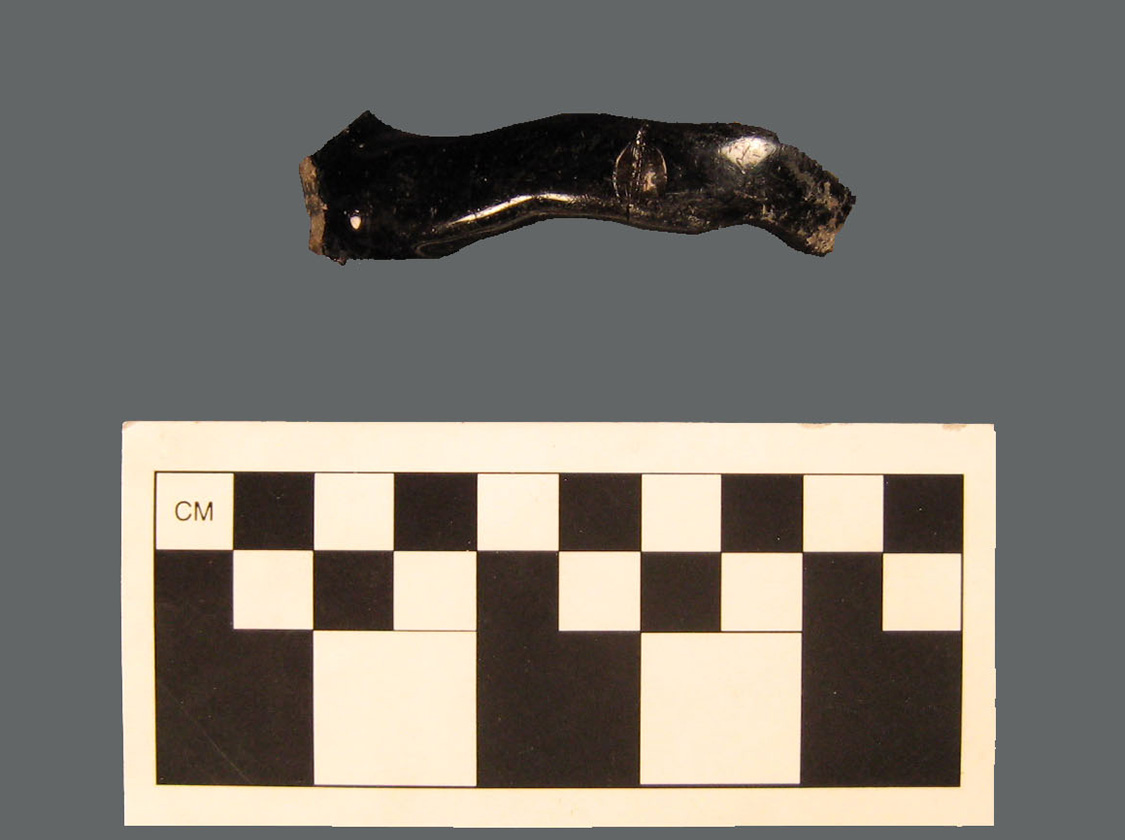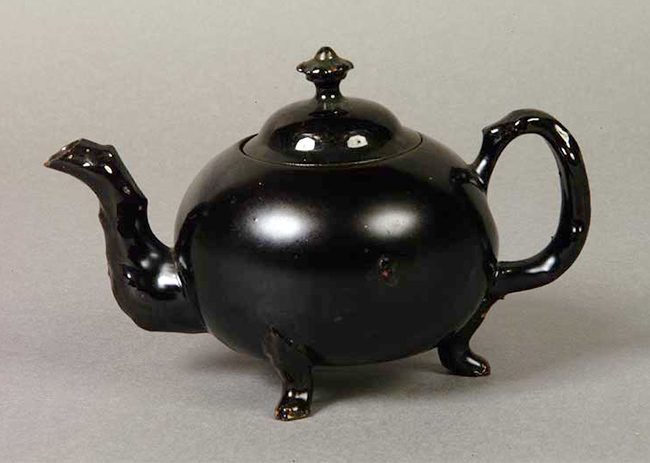 This Jackfield ware teapot handle is typical of the gnarled, tree-branch-shaped handles and spouts, called crabstick, that are found on some eighteenth-century Staffordshire tea and coffee wares (Nöel-Hume 1969: Figure 1.29).
This Jackfield ware teapot handle is typical of the gnarled, tree-branch-shaped handles and spouts, called crabstick, that are found on some eighteenth-century Staffordshire tea and coffee wares (Nöel-Hume 1969: Figure 1.29).
Kathleen Cande (Arkansas Archaeological Survey)
Artifact of the Month - July 2018
This handle from a Jackfield ware teapot was found in Feature 1 at Jacob Garrett’s tavern in Davidsonville Historic State Park. From 2004 through 2009 the Arkansas Archeological Survey conducted excavations at this early nineteenth century county seat town in Randolph County, Arkansas (Cande 2008). Now protected as a state park, Davidsonville was the first county seat town in Arkansas. It was platted in 1815–1816, and served as the Lawrence County seat of justice until 1829.

No buildings have survived at Davidsonville, and little was known about the layout of the town. Archeology is a way to discover facts about whatever is left behind under the ground — foundations and other building remains can reveal their exact locations, the materials used, and how people lived and worked in them.
Population in the town fluctuated depending on when court was in session. A number of taverns and boarding houses in private residences were available for visitors coming to Davidsonville for court. Jacob Garrett’s tavern was one such place. County records show that in 1819 he was licensed to “keep a public house of entertainment” in Lot 35, just across the street from the courthouse (Dollar 1979:27–31; Lawrence County Deed Record Book B).
In 2004 and 2005 we excavated a large feature that would have been beneath or just outside the residence. It was either a cellar, or perhaps a trash pit. The feature and surrounding midden deposits contained 76 whole or reconstructable ceramic vessels, fragments of redware pitchers and food-storage pots, bone-handled cutlery, candlesticks, glass bottles, beads, buttons, and coins. All of these items were either brought to Davidsonville by settlers or were purchased from area merchants. All of the ceramic dishes and fragments were made in England.
According to historical archeologist Ivor Nöel-Hume (1969:123), Jackfield ware was manufactured in quantity from about 1745 to 1790 in England. As he describes it, “the body is usually fired to purple or gray and is coated with a deep-black glaze.” The Davidsonville Jackfield ware was probably produced by Thomas Whieldon, since his Jackfield ware had a red body. Both Whieldon and the Jackfield Pottery in Shropshire, England produced tea wares and pitchers.
We know that five Frenchmen owned the land that became the town of Davidsonville in the early 1800s. It is possible that one of them, or another settler, owned the teapot and brought it to Davidsonville. There is no other evidence of Euroamerican settlers at Davidsonville during the late eighteenth century when the teapot was manufactured. With its shiny black exterior and bright brick red paste, it is a very striking type of vessel among all of the other white-bodied ceramics from Davidsonville.
-
Visit the Davidsonville Interactive website to view a 3D reconstruction of the site as well as more artifacts.
